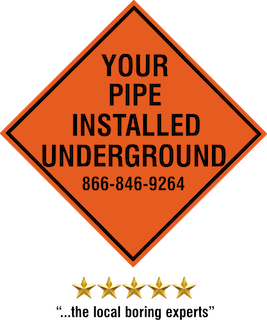Joint Trench Utilities
Emergency Boring - Joint Trench Utilities Contractors
Joint trench utilities involve the practice of combining multiple utility conduits (e.g., electric, telecom, water, gas) into a single trench or conduit system. This approach is widely used in duct bank boring, trenching, conduit construction, and conduit installation for various reasons, including cost-efficiency, space optimization, and streamlined installation.
Here’s how it applies to each aspect you mentioned:
Emergency Boring - Joint Trench Utilities Companies
1. Duct Bank Boring
In duct bank boring, joint trench utilities are integrated to consolidate multiple utility conduits into a single bored path. This method:
- Reduces the need for multiple bores.
- Protects utilities in a shared duct bank, using materials like PVC or concrete for durability.
- Involves trenchless methods (e.g., horizontal directional drilling or jack and bore) to minimize surface disruption.
2. Trenching
When creating trenches for joint utilities, the practice includes:
- Excavating a shared trench wide enough to house all conduits.
- Ensuring proper separation and alignment for each utility (using spacers to avoid interference).
- Backfilling and compacting with material suitable for protecting utilities.
3. Conduit Construction
Joint trenching simplifies conduit construction by:
- Allowing the simultaneous placement of conduits for different utilities.
- Designing conduit layouts that comply with regulatory codes for separation and safety.
- Improving installation efficiency by grouping related systems.
4. Conduit Installation
In joint trench systems:
- Electric and telecom conduits are laid side by side or stacked in organized rows.
- High-density polyethylene (HDPE) or PVC conduits are common materials for joint installations due to their durability.
- Each conduit is labeled to distinguish the type of utility (e.g., power, communication).
5. Electric and Telecom Utilities
Joint trenching is especially advantageous for electric and telecom lines because:
- Power and communication cables can be installed concurrently.
- Ensures adequate separation to prevent electromagnetic interference (EMI) and ensure safety.
- Shared access points can be created for maintenance.
6. Duct Bank Construction
Duct banks are a structured form of joint trenching and involve:
- Encasing conduits in concrete for added protection.
- Organizing conduits with spacers to maintain alignment and separation.
- Allowing for future expansion or upgrades by including spare conduits.
Emergency Boring - Joint Trench Utilities Near Me
Benefits of Joint Trench Utilities
- Cost Savings: Reduces excavation, material, and labor costs by consolidating multiple utilities in one installation.
- Space Efficiency: Ideal for urban areas where underground space is limited.
- Minimized Disruption: Decreases the impact on roads, landscapes, and infrastructure.
- Future-Proofing: Allows for the addition of new utilities without major excavation.
- Regulatory Compliance: Meets local utility separation and safety standards.
Joint trench utilities are a strategic approach in modern infrastructure projects, streamlining the construction process and providing long-term benefits for utility providers and communities.


